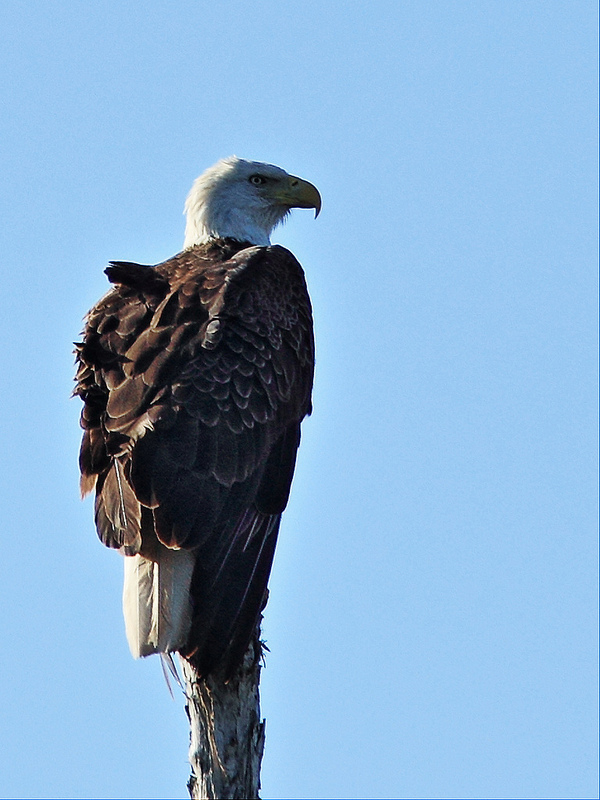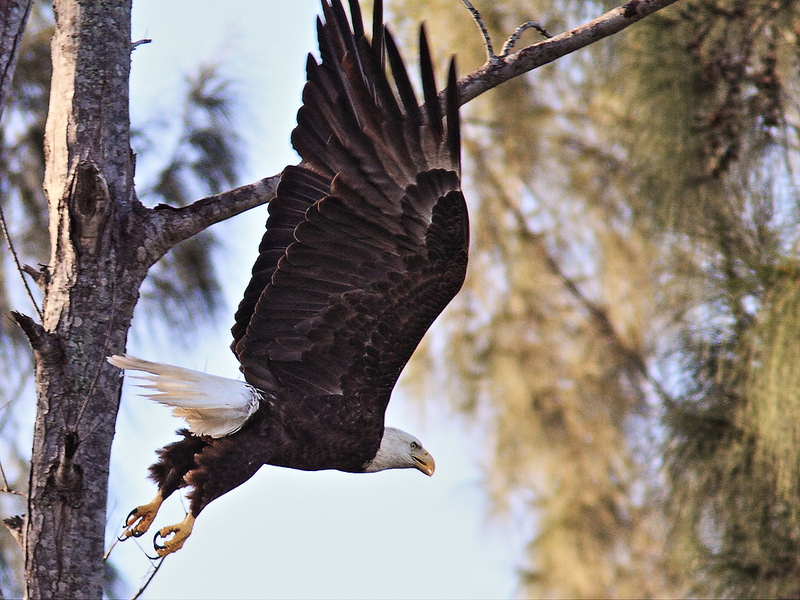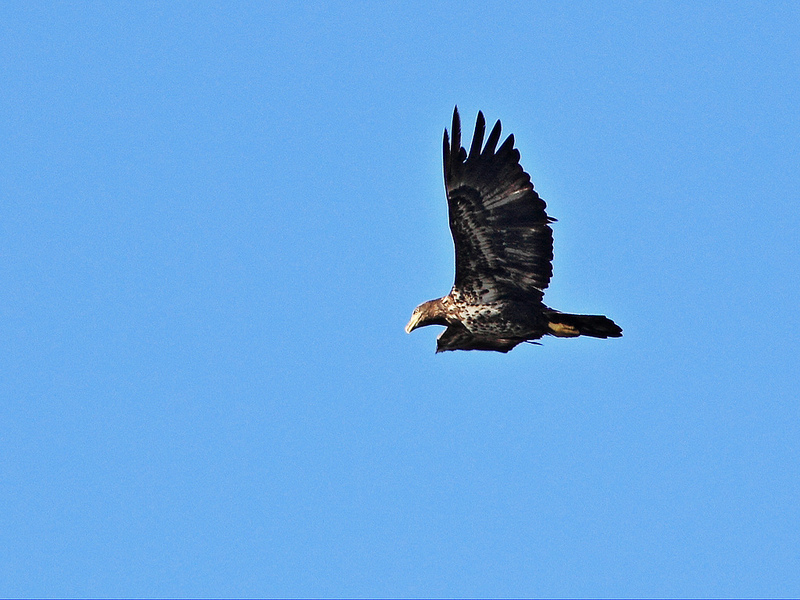Mary Lou and I arrived at about 8:10 AM and found the (presumed) female Joy sitting quite high on the nest. She appeared more active than usual and twice got up and looked into the nest. Her wings seemed partially open, suggesting she may be "tenting" a hatchling.

The (presumed) male was roosting in a Melaleuca snag to the west of the nest. Desiree arrived and we both had trouble being sure about which eagle was the male. I will continue to identify this one as the male, Pride.

At 9:05 AM Pride flew and roosted in the dead tree to the east of the nest.

At 9:09 he flew off to the northwest.

At 9:11 he returned carrying grasses in his talons.

The male carried the nesting material directly to the nest. Both adults looked down into the nest for a short time.

At 9:13 Joy flew into the favored roost pine just east of the nest but stayed there only a few seconds.


She then flew further east to the dead tree.

I followed her part way but she again flew out and turned back westward.

We heard some calling. Joy was chasing a second year juvenile eagle up into the air just west of the nest, over Pines Boulevard.

They briefly skirmished, and the action happened so fast that neither Desiree nor I could get them both into our viewfinders at once before the juvie retreated to the south and disappeared. To me, this looks like a different bird than
the one I photographed earlier this week because it is in an obvious state of molt. Most of its secondaries are long and bulging as expected in juvenile (1+ year old) birds. Both its primaries and secondaries are of irregular length, its tail is molting and one left primary is missing. It did have a considerable amount of white on its belly and a poorly defined bib but its wings were inconsistent with an older (White-belly II or 3rd year) immature bird.
Meantime, Pride continued sitting in the nest.

The changes in behavior,such as the continued presence of both adults, the elevated incubation posture, and the increased examination of the nest contents by both adults strongly suggest that the first egg has hatched.